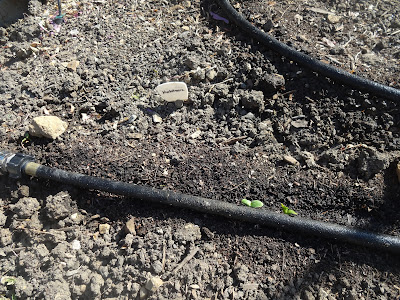In contemplating my gardening I have often contemplated how wonderful it would be if I could grow some other carosello varieties at gardens that are far enough away from my garden to disrupt cross-pollination. Finally, this summer I was given the opportunity to fulfill that desire. In helping one of my children with his lawn care job and chicken-sitting gig, I asked - and was offered - a few patches of land to work with.
The first patch of ground is owned by a friend who gave me my greenhouse. He has been working with his soil for years and it shows! It is soft and friable. I am very careful to treat the area he allots me very well. I am always awed at how quickly everything in his soil grows – including weeds. Most of what he plants are light feeders and are put in a large compost bin after the season is over. In future posts, I'll refer to this as "The Fertile Garden".
The second plot is owned by a friend with a large lot and chickens. I'll refer to this as "The Chicken Garden". The soil is rocky and difficult to work. I made sure to add plenty of compost and some amendments when planting, and later dressing the carosello I planted here.
I am truly grateful for the blessings of being able to garden so much this summer. Every time I focus on the needs of the plants in each garden, I am able to escape the overbearing stress of everything else going on in life.
The first patch of ground is owned by a friend who gave me my greenhouse. He has been working with his soil for years and it shows! It is soft and friable. I am very careful to treat the area he allots me very well. I am always awed at how quickly everything in his soil grows – including weeds. Most of what he plants are light feeders and are put in a large compost bin after the season is over. In future posts, I'll refer to this as "The Fertile Garden".
The second plot is owned by a friend with a large lot and chickens. I'll refer to this as "The Chicken Garden". The soil is rocky and difficult to work. I made sure to add plenty of compost and some amendments when planting, and later dressing the carosello I planted here.
I am truly grateful for the blessings of being able to garden so much this summer. Every time I focus on the needs of the plants in each garden, I am able to escape the overbearing stress of everything else going on in life.
 |
| My carosello after about 3 weeks growth in The Fertile Garden. |



































